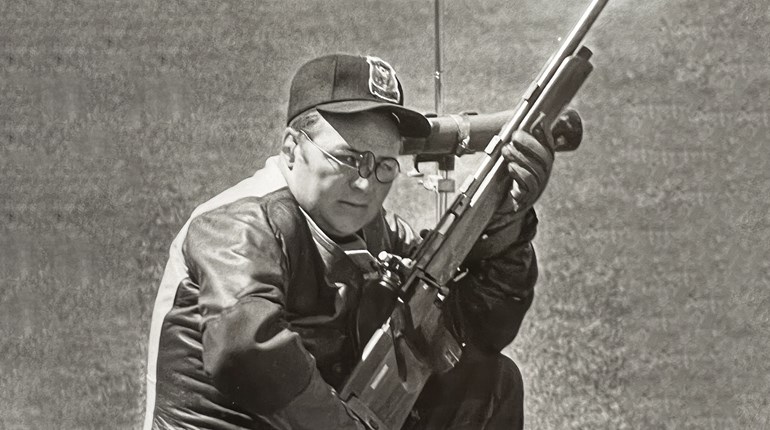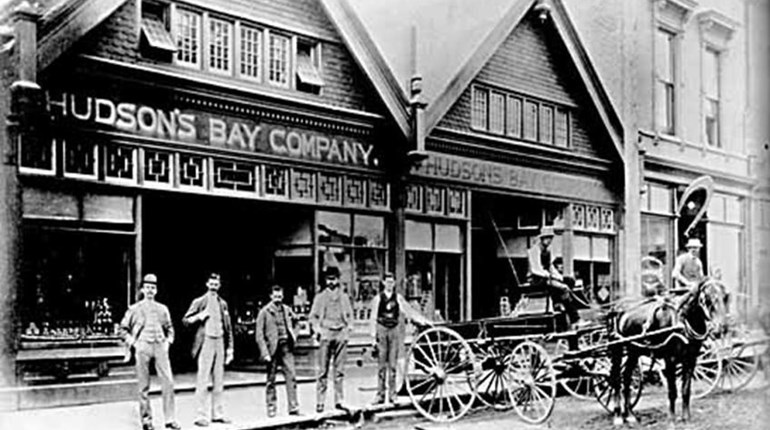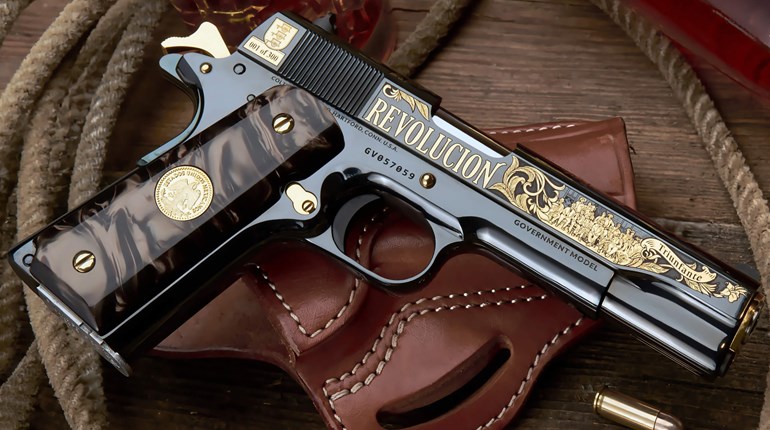
"While not losing interest in promoting the military shooting game, the small bore game must be the avenue through which we reach and interest the greatest numbers of our citizens so as to bring about the universal adoption of shooting the rifle as a national sport."
—The American Rifleman, February 1925
This year, the federal appropriation for civilians to attend the National Matches was again authorized by the Secretary of War due in large part to the NRA's interest in and dedication to the cause. While such intervention exemplified the supportive and complementary relationship between the National Board and the NRA, the fact that both bodies had offices in the same building cast a shadow of confusion over an otherwise cohesive arrangement.
Functions of the respective organizations were easily misconstrued by the public when coordinated under the same roof and it was not uncommon for some to equate NRA affiliation with signing up for War Department service. When the National Board, which included the DCM, moved out of the Woodward Building in Washington, D.C. this year, the NRA took a big step toward clarifying its role as a civilian organization that strongly supported a government one.
This year's National Matches marked the end of Lt. Col. Morton Mumma's lengthy stint as Executive Officer when the Infantry's Col. Alexander J. Macnab Jr. was assigned the post of overseeing a program that had expanded in recent years to include more than 25 NRA events in smallbore and handgun combined. Just since the start of the decade, efforts to encourage participation at the youth and collegiate levels, coupled with an influx of new trophies, added to the growing appeal of the matches.
The popularity of shooting among juniors in particular is what motivated the NRA to further cultivate its own opportunities for young shooters by absorbing the former Winchester Junior Rifle Corps Program, a six-day instructional smallbore camp held during the National Matches that included championship events fired in three age divisions. The NRA had been involved in the joint administration of the junior camp from its inception at the National Matches in 1923 through this year but on January 1, 1926, it assumed complete control of the Winchester program in order to better modify and expand its activities for such an eager and ever-developing audience.
Although the 1925 National Matches program stated that "the principal interest of shooters at Perry is in the rifle so that the program of pistol events is intended more for the purpose of introducing riflemen to the pistol shooting game ..." it was during this time that more police departments began to take advantage of the pistol training and competitive opportunities of the National Matches. It was also in this year's printed program that the inclusive nature of the term National Matches was first addressed: "Strictly speaking, the 'National Matches' represent only the four culminating events of the Camp Perry Program ... However, the term 'National Matches' has come to mean much more ..."
Smallbore continued to attract a growing following of competitors who by now came to the National Matches solely to vie for honors in that discipline. And efforts were made to coordinate National Match events so members of supported military and civilian teams on hand to shoot the service rifle could shoot the smaller caliber if they wanted. The smallbore trophies were as impressive as the older high power awards and began to accumulate their own historical significance. In all, smallbore had made its mark as both an individual sport and team event with all eyes focused on the big prize of the Dewar Trophy. It could even be said that this was the start of the era when all other smallbore events led up to, and were subordinate to, efforts to maintain possession of this prestigious trophy.
The smallbore program contained the usual selection of pick and choose matches and the NRA National Individual Smallbore Match, considered the national championship, remained a single-fired match in the Smallbore Grand Aggregate. For an entry fee of one dollar, two if one was not an NRA member, the winner could take home a gold medal, a percentage of the entry fees, and bragging rights for posting the high score across a three-stage course-of-fire: 10 shots each at 50,100 and 200 yards with any .22 caliber rimfire rifle affixed with any sights. This year the honor went to Arizona National Guardsmen Sgt. Thomas Imler with a 248.
The Dewar team was selected by Captain Grosvenor Wotkyns and Head Coach Frank Kahrs, who kept a sharp eye on the scores from the Individual Short Range Match, which served as the preliminary tryout. Of the 20 who made the squad, 19 were civilians and the performance this year, led by E.F. Shearer's 398, resulted in a 7791 score. Six days later, the British team managed to equal their own score from the year before, but it left them in second place by a 38-point margin. The Dewar Trophy remained in the United States another year as the Americans stretched its string of consecutive victories to nine.
Among the NRA "big-match" winners were Marine Capt. William Ashurst and Lt. Pierson Conradt in the Wimbledon and Leech contests, respectively, while Engineer Lt. Bruce Hill finished atop the President's Match field of almost 1,200 competitors. In team competition, the fate of both the Marines and Infantry mirrored that of the year before in the Herrick and Infantry Matches, respectively, as their second place finishes would attest. This time the California Civilian team won the Herrick and the Cavalry team took top honors in the Infantry Match.
—The American Rifleman, February 1925
This year, the federal appropriation for civilians to attend the National Matches was again authorized by the Secretary of War due in large part to the NRA's interest in and dedication to the cause. While such intervention exemplified the supportive and complementary relationship between the National Board and the NRA, the fact that both bodies had offices in the same building cast a shadow of confusion over an otherwise cohesive arrangement.
Functions of the respective organizations were easily misconstrued by the public when coordinated under the same roof and it was not uncommon for some to equate NRA affiliation with signing up for War Department service. When the National Board, which included the DCM, moved out of the Woodward Building in Washington, D.C. this year, the NRA took a big step toward clarifying its role as a civilian organization that strongly supported a government one.
This year's National Matches marked the end of Lt. Col. Morton Mumma's lengthy stint as Executive Officer when the Infantry's Col. Alexander J. Macnab Jr. was assigned the post of overseeing a program that had expanded in recent years to include more than 25 NRA events in smallbore and handgun combined. Just since the start of the decade, efforts to encourage participation at the youth and collegiate levels, coupled with an influx of new trophies, added to the growing appeal of the matches.
The popularity of shooting among juniors in particular is what motivated the NRA to further cultivate its own opportunities for young shooters by absorbing the former Winchester Junior Rifle Corps Program, a six-day instructional smallbore camp held during the National Matches that included championship events fired in three age divisions. The NRA had been involved in the joint administration of the junior camp from its inception at the National Matches in 1923 through this year but on January 1, 1926, it assumed complete control of the Winchester program in order to better modify and expand its activities for such an eager and ever-developing audience.
Although the 1925 National Matches program stated that "the principal interest of shooters at Perry is in the rifle so that the program of pistol events is intended more for the purpose of introducing riflemen to the pistol shooting game ..." it was during this time that more police departments began to take advantage of the pistol training and competitive opportunities of the National Matches. It was also in this year's printed program that the inclusive nature of the term National Matches was first addressed: "Strictly speaking, the 'National Matches' represent only the four culminating events of the Camp Perry Program ... However, the term 'National Matches' has come to mean much more ..."
Smallbore continued to attract a growing following of competitors who by now came to the National Matches solely to vie for honors in that discipline. And efforts were made to coordinate National Match events so members of supported military and civilian teams on hand to shoot the service rifle could shoot the smaller caliber if they wanted. The smallbore trophies were as impressive as the older high power awards and began to accumulate their own historical significance. In all, smallbore had made its mark as both an individual sport and team event with all eyes focused on the big prize of the Dewar Trophy. It could even be said that this was the start of the era when all other smallbore events led up to, and were subordinate to, efforts to maintain possession of this prestigious trophy.
The smallbore program contained the usual selection of pick and choose matches and the NRA National Individual Smallbore Match, considered the national championship, remained a single-fired match in the Smallbore Grand Aggregate. For an entry fee of one dollar, two if one was not an NRA member, the winner could take home a gold medal, a percentage of the entry fees, and bragging rights for posting the high score across a three-stage course-of-fire: 10 shots each at 50,100 and 200 yards with any .22 caliber rimfire rifle affixed with any sights. This year the honor went to Arizona National Guardsmen Sgt. Thomas Imler with a 248.
The Dewar team was selected by Captain Grosvenor Wotkyns and Head Coach Frank Kahrs, who kept a sharp eye on the scores from the Individual Short Range Match, which served as the preliminary tryout. Of the 20 who made the squad, 19 were civilians and the performance this year, led by E.F. Shearer's 398, resulted in a 7791 score. Six days later, the British team managed to equal their own score from the year before, but it left them in second place by a 38-point margin. The Dewar Trophy remained in the United States another year as the Americans stretched its string of consecutive victories to nine.
Among the NRA "big-match" winners were Marine Capt. William Ashurst and Lt. Pierson Conradt in the Wimbledon and Leech contests, respectively, while Engineer Lt. Bruce Hill finished atop the President's Match field of almost 1,200 competitors. In team competition, the fate of both the Marines and Infantry mirrored that of the year before in the Herrick and Infantry Matches, respectively, as their second place finishes would attest. This time the California Civilian team won the Herrick and the Cavalry team took top honors in the Infantry Match.

































